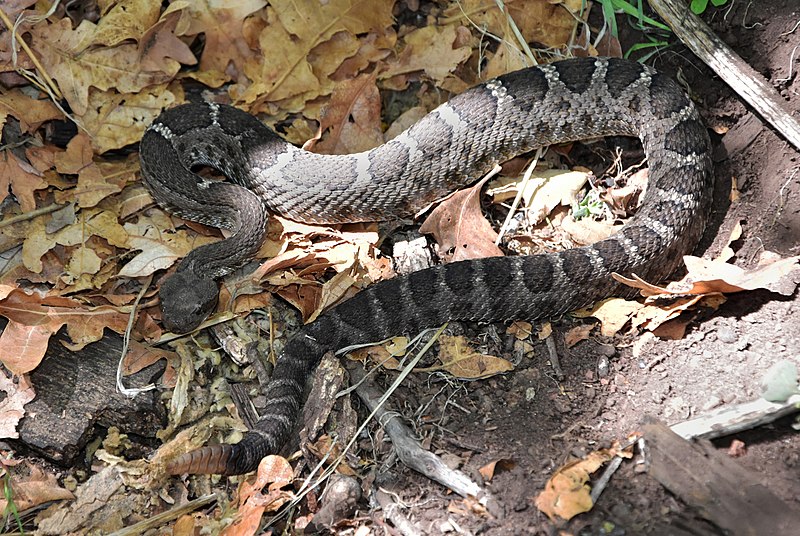Understanding the truth about baby rattlesnakes can mean the difference between a safe encounter and a dangerous one.
Are baby rattlesnakes dangerous? The short answer: Yes, they are. But let’s dive deeper into why these tiny reptiles pack such a powerful punch. Whether you’re an adventurous hiker, a concerned parent, or just someone who enjoys the great outdoors, understanding the risks and behaviors of baby rattlesnakes can make a big difference in how you handle encounters with these fascinating creatures.
Key Takeaways
- Baby rattlesnakes are just as venomous as adults, if not more.
- They are more likely to use all their venom in a bite.
- Identification tips: How to spot a baby rattlesnake.
- Safety tips: What to do if you encounter a baby rattlesnake.
- Myths debunked: Common misconceptions about baby rattlesnakes.
The Venomous Truth About Baby Rattlesnakes
Alright, let’s get to the heart of the matter: the venomous truth about baby rattlesnakes. These tiny terrors might look less intimidating than their adult counterparts, but don’t let their size fool you. Here’s why baby rattlesnakes are just as, if not more, dangerous than adults.
Born Ready to Strike
Baby rattlesnakes come into the world fully equipped with venom and the ability to deliver it. From day one, they can control the release of their venom, but here’s the kicker—they often don’t hold back. While adult rattlesnakes might conserve their venom, using it judiciously, baby rattlesnakes tend to inject all they’ve got when they bite. This means a bite from a baby can be just as lethal, if not more so, because you’re getting the full dose.
Venom Composition: Potent and Powerful
The venom of a baby rattlesnake isn’t just a diluted version of the adult’s. In fact, it can be even more potent. The venom contains a complex mix of toxins designed to immobilize prey and begin the digestive process. For humans, this means that even a small amount can cause significant damage. The higher concentration of certain enzymes and proteins in baby rattlesnake venom can lead to more severe symptoms and complications.
All or Nothing Approach
One of the reasons baby rattlesnakes are considered more dangerous is their lack of control over venom injection. Adult rattlesnakes have learned to regulate how much venom they use, often delivering dry bites as a warning. Babies, on the other hand, haven’t mastered this skill yet. When they bite, they’re more likely to use all their venom. This “all or nothing” approach makes their bites particularly dangerous.
Why They Bite
Like their adult counterparts, baby rattlesnakes bite primarily in self-defense or when they feel threatened. However, because they’re smaller and less experienced, they might feel threatened more easily and thus be more likely to bite. This is why it’s crucial to be cautious and aware of your surroundings, especially in areas known to be inhabited by rattlesnakes.
The Bottom Line
When it comes to baby rattlesnakes, the adage “good things come in small packages” takes on a more ominous tone. Their venom is just as powerful, their bites can be more severe, and they’re not afraid to use everything they’ve got. Respecting these little creatures and understanding the risks they pose is key to staying safe in the great outdoors.
Identifying Baby Rattlesnakes
Now that we’ve covered how dangerous baby rattlesnakes can be, let’s move on to how you can identify them. Spotting these little vipers isn’t always straightforward, especially since they don’t look exactly like their adult counterparts. Here are the key characteristics to look out for.
Physical Characteristics: Size and Color
Baby rattlesnakes are typically born about 10 inches long, but they can range from 6 to 12 inches. They’re small, but their distinct markings can help you identify them. Look for the following:
- Color: Baby rattlesnakes often have brighter and more vivid colors compared to adults. Their patterns, usually consisting of blotches or bands, are more pronounced.
- Scales: Like adults, baby rattlesnakes have keeled scales (scales with a ridge down the center), which give them a rough texture.
The Rattle (Or Lack Thereof)
One of the biggest giveaways of a rattlesnake is, of course, its rattle. However, baby rattlesnakes don’t have a fully developed rattle yet. They’re born with a pre-button at the end of their tail, which isn’t capable of making the distinctive rattling sound. As they grow and shed their skin, new segments are added to their rattle. Until they’ve had a few sheds, their “rattle” might just be a silent nub.
Head Shape and Eyes
The shape of a rattlesnake’s head is another distinguishing feature:
- Triangular Head: Like adults, baby rattlesnakes have a distinctly triangular or arrow-shaped head, broader at the base and narrowing towards the snout.
- Eyes: Their eyes have vertical, cat-like pupils, unlike the round pupils of non-venomous snakes. However, getting close enough to observe their pupils is not advisable!
Behavior: How They Move and Act
Baby rattlesnakes exhibit some behavioral traits that can help in identification:
- Coiling and Striking: Even at a young age, rattlesnakes exhibit the classic coiled pose when they feel threatened. They’ll coil their body and hold their head high, ready to strike.
- Movement: They might move more erratically compared to adults. Due to their inexperience, they can be more defensive and unpredictable.
Habitat and Timing
Knowing when and where you’re likely to encounter baby rattlesnakes can also aid in identification:
- Season: Baby rattlesnakes are usually born in late summer to early fall. During this time, there might be an uptick in sightings.
- Environment: They can be found in the same habitats as adult rattlesnakes, including rocky areas, deserts, grasslands, and sometimes even near water sources.
Key Tips for Identification
- If you see a small snake with vivid patterns and a triangular head, it’s best to assume it could be a baby rattlesnake.
- Lack of a fully developed rattle doesn’t mean it’s safe—baby rattlesnakes are still dangerous.
- Observing from a safe distance is crucial. If you’re unsure, it’s better to err on the side of caution and treat any small, patterned snake as potentially venomous.
Safety Tips: Encountering a Baby Rattlesnake
So, you’ve armed yourself with knowledge about how dangerous baby rattlesnakes can be and how to identify them. Now, let’s talk about what to do if you actually encounter one of these little guys. Whether you’re hiking in the wild or just walking in your backyard, these safety tips will help you handle the situation like a pro.
Stay Calm and Back Away Slowly
First things first: don’t panic. Baby rattlesnakes are more afraid of you than you are of them. Sudden movements can provoke a defensive reaction, so the best approach is to stay calm. Slowly and steadily back away from the snake, giving it plenty of space to retreat.
Do Not Attempt to Handle or Provoke the Snake
This might seem like common sense, but it’s worth repeating: never try to handle, touch, or provoke a rattlesnake, baby or otherwise. Even if it appears to be dead, leave it alone. Baby rattlesnakes, despite their size, can deliver a powerful bite that’s just as venomous as an adult’s.
Keep Children and Pets Safe
Kids and pets are naturally curious and might not understand the danger a baby rattlesnake poses. Here’s how to keep them safe:
- Educate: Teach your children to recognize the appearance of a rattlesnake and to alert an adult immediately if they see one.
- Supervise: Always keep an eye on young children and pets when they’re playing outside, especially in areas known to have snakes.
- Leash Pets: When hiking or walking in snake-prone areas, keep your pets on a leash and stay on designated paths.
Wear Proper Footwear and Clothing
If you’re heading into areas where rattlesnakes are common, dress for safety:
- Boots: Wear sturdy, closed-toe boots that cover your ankles. This provides some protection if you accidentally step near a hidden snake.
- Long Pants: Opt for long pants instead of shorts. Thick fabrics can offer an extra layer of protection against bites.
Stick to Well-Worn Paths
When hiking, stay on established trails and avoid wandering into tall grass, dense underbrush, or rocky areas where snakes might be hiding. Sticking to clear paths reduces your chances of a surprise encounter.
Use a Walking Stick
A walking stick can be a handy tool in snake country. Not only does it help with balance, but you can also use it to gently probe ahead in areas where visibility is low, like tall grass or thick underbrush. This can help alert any hidden snakes to your presence, giving them a chance to slither away before you get too close.
Be Cautious Around Rocks and Logs
Snakes love to hide in cool, shaded areas like under rocks and logs. When moving through these environments:
- Step on Logs: Step onto logs and rocks rather than over them. This way, you won’t accidentally surprise a snake that might be hiding on the other side.
- Look Before You Reach: If you need to pick something up or move a rock or log, use a stick or tool to shift it first. Never use your hands without checking the area.
What to Do if Bitten
Despite your best efforts, bites can still happen. If you or someone else is bitten by a rattlesnake:
- Stay Calm: Try to remain as calm and still as possible to slow the spread of venom.
- Call for Help: Seek immediate medical attention. Call emergency services or get to the nearest hospital.
- Immobilize the Affected Area: Keep the bite area at or below heart level and immobilize it to reduce venom spread.
- Remove Tight Clothing/Jewelry: Remove any tight clothing or jewelry near the bite site, as swelling can occur.
Myth-Busting: Common Misconceptions
Alright, it’s time to tackle some of the myths and misconceptions surrounding baby rattlesnakes. There’s a lot of misinformation out there, and clearing it up can help you stay safe and informed. Let’s dive into some of the most common myths and set the record straight.
Myth: Baby Rattlesnakes Are Harmless
One of the biggest misconceptions is that baby rattlesnakes are harmless because they’re small. This couldn’t be further from the truth. As we’ve discussed, baby rattlesnakes are born with fully functional venom and the ability to deliver it. In fact, their bites can be more dangerous because they tend to release all their venom at once. Size doesn’t equate to safety when it comes to these little vipers.
Myth: Baby Rattlesnakes Can’t Control Their Venom
There’s a persistent belief that baby rattlesnakes can’t control how much venom they inject, leading to more dangerous bites. While it’s true that they might not have the same level of control as adults, this doesn’t mean they’re completely unregulated. They can control their venom, but they’re more likely to use it all because they haven’t yet learned the more conservative biting techniques of adult snakes.
Myth: All Rattlesnakes Will Rattle Before Striking
Many people believe that rattlesnakes always rattle before they strike as a warning. However, this isn’t always the case. Baby rattlesnakes, in particular, might not have a developed rattle or might not use it effectively. Even adults can strike without rattling if they’re startled or feel threatened suddenly. Relying solely on the presence of a rattle as a warning can lead to dangerous assumptions.
Myth: Rattlesnake Bites Are Always Fatal
While a rattlesnake bite is a serious medical emergency, it’s not always fatal, especially with prompt medical treatment. Advances in antivenom and medical care have significantly improved the prognosis for snakebite victims. However, it’s crucial to treat every bite seriously and seek immediate medical attention to reduce the risk of severe complications.
Myth: You Can Suck Out the Venom
This old wives’ tale is not only ineffective but can also be harmful. Trying to suck out the venom can introduce bacteria into the wound and cause more damage. The best course of action is to keep the affected area immobilized, stay calm, and get to a hospital as quickly as possible.
Myth: Rattlesnakes Only Live in Deserts
While rattlesnakes are commonly associated with desert environments, they can actually be found in a variety of habitats, including forests, grasslands, and even coastal areas. They’re adaptable creatures that can thrive in many different conditions. Knowing that they can be found in various environments can help you stay vigilant no matter where you are.
Myth: Baby Rattlesnakes Are More Dangerous Than Adults
This myth stems from the idea that baby rattlesnakes release all their venom in a bite, making them more dangerous. While it’s true that they might use more venom, adult rattlesnakes have larger venom glands and can deliver a more significant dose overall. Both baby and adult rattlesnakes pose serious risks, and it’s important to treat them both with caution and respect.
Conclusion
Alright, we’ve journeyed through the intriguing world of baby rattlesnakes, uncovering their dangers, how to identify them, safety tips for encounters, and busting some common myths. Let’s wrap it all up with a clear and concise conclusion.
Baby rattlesnakes may be small, but they pack a powerful punch. Their venom is potent, their bites can be severe, and they’re not to be underestimated. By understanding their behavior, knowing how to identify them, and following safety precautions, you can enjoy the great outdoors without unnecessary fear.
Remember, it’s all about awareness and respect. Whether you’re hiking through their natural habitat or simply living in an area where they might be present, being informed is your best defense. Baby rattlesnakes, like all wildlife, play a crucial role in the ecosystem, and with the right knowledge, you can coexist safely with these fascinating creatures.
Stay vigilant, stay safe, and enjoy the beauty of nature responsibly. And hey, if you’ve got your own rattlesnake stories or tips, drop a comment below or reach out on social media. Let’s keep the conversation going and help each other stay informed and prepared.














